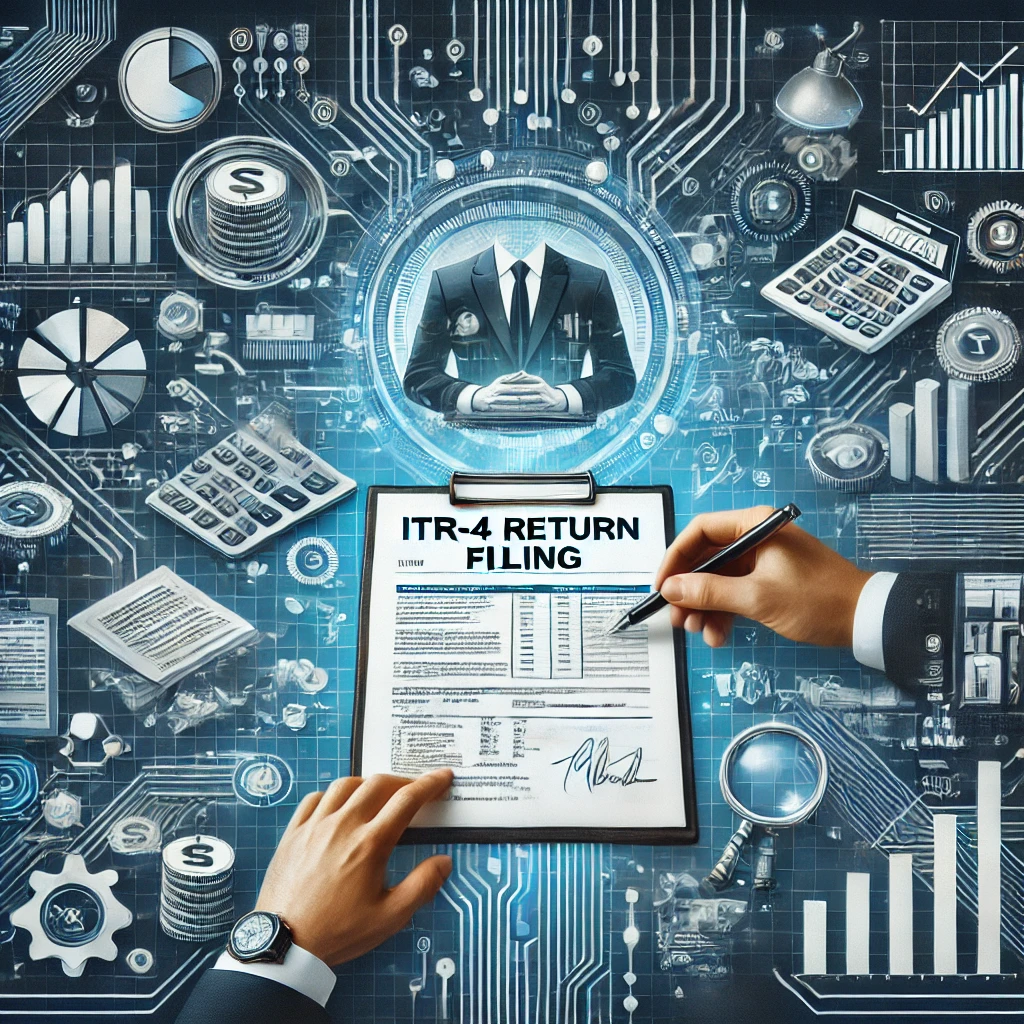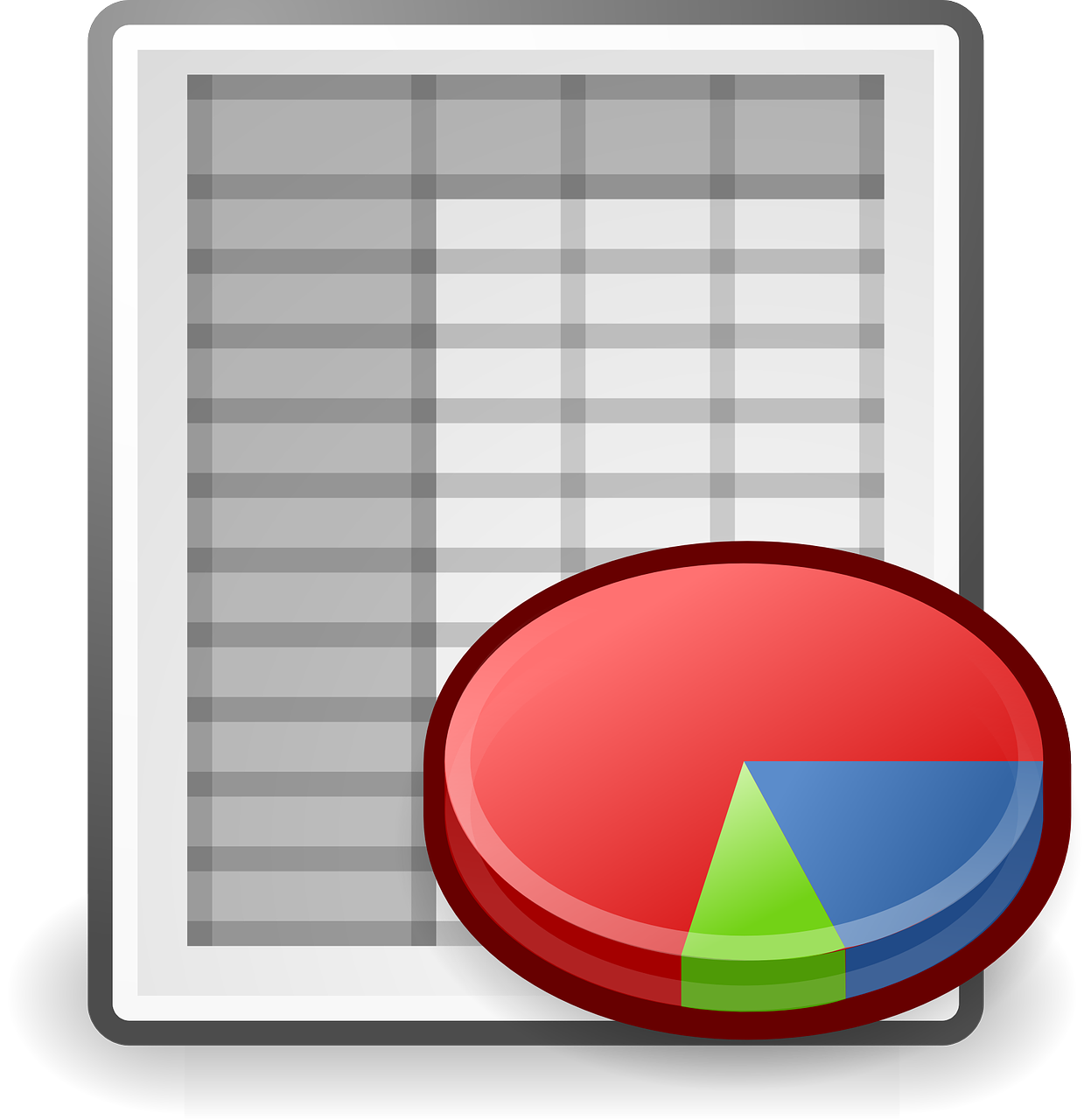Start Business
Start Business
Registration & License
Registration & License
Trademark Filing
Trademark Filing
Goods & Service Tax
Goods & Service Tax
Income Tax
Income Tax
MCA Services
Tender Registration
Tender Registration
Others
ITR-4 Return Filing in India – Simplified Tax Return for Small Businesses & Professionals
Best & Reasonable Plans
Smart solutions,fair prices - your success starts with the Innovative solutions, competitive pricing – your journey to success begins with the perfect balance for growth!

OVERVIEW
ITR-4, also known as Sugam, is designed for individuals, Hindu Undivided Families (HUFs), and firms (excluding LLPs) who opt for the presumptive taxation scheme under Sections 44AD, 44ADA, and 44AE of the Income Tax Act. This return is suitable for small businesses and professionals who wish to simplify their tax compliance by declaring income on a presumptive basis, eliminating the need for maintaining detailed books of accounts. It is ideal for taxpayers earning income from business, freelancing, or professions like doctors, lawyers, and consultants. However, individuals with capital gains, foreign income, or high-value transactions are not eligible to file ITR-4.
Key Features Of ITR-4 Return Filing
- • Designed for Presumptive Taxation : ITR-4 is mainly for taxpayers opting for presumptive taxation under Sections 44AD, 44ADA, and 44AE. Under this scheme, businesses declare a fixed percentage of their turnover as taxable income, simplifying tax calculations.
- • No Need to Maintain Detailed Books of Accounts : Since income is calculated on a presumptive basis, taxpayers filing ITR-4 are not required to maintain detailed books of accounts or undergo tax audits unless their income exceeds prescribed limits.
- • Covers Multiple Income Sources : ITR-4 allows taxpayers to declare income from business, profession, salary, pension, and house property. However, it does not cover capital gains, foreign assets, or business entities other than sole proprietorships.
What is ITR-4?
ITR-4, also known as Sugam, is an income tax return form designed for individuals, Hindu Undivided Families (HUFs), and firms (excluding LLPs) who have opted for the presumptive taxation scheme under Sections 44AD, 44ADA, and 44AE of the Income Tax Act. This scheme is meant to simplify tax compliance for small businesses, professionals, and transporters by allowing them to declare a fixed percentage of their income rather than maintaining detailed books of accounts.
ITR-4 is typically used by taxpayers whose total income does not exceed ₹50 lakh and who earn from business, freelancing, or professional services. It also covers income from salary, pension, one house property, and other sources (excluding capital gains and foreign income). The primary advantage of filing ITR-4 is that it reduces the burden of maintaining detailed records and eliminates the need for mandatory tax audits, making tax filing easier and more efficient.
However, ITR-4 cannot be used by individuals who own more than one house property, earn income from capital gains, foreign assets, cryptocurrencies, or speculative business, or are directors in a company. Additionally, taxpayers who wish to claim deductions under Sections 10AA, 80QQB, or 80RRB must file ITR-3 instead.
This form is best suited for small business owners, shopkeepers, freelancers, doctors, lawyers, and transporters who wish to avail the benefits of presumptive taxation while maintaining a straightforward tax filing process.
Who Can File ITR-4?
Individuals with Business Income under Section 44AD
Individuals engaged in small businesses, retail shops, manufacturing units, and trading can opt for presumptive taxation under Section 44AD. This scheme allows business owners to declare at least 6% of their digital transactions or 8% of their cash transactions as taxable income, without the need to maintain detailed financial records. This applies only to businesses with an annual turnover of up to ₹2 crore. By using this scheme, taxpayers can save time and reduce compliance burdens, making it a preferred choice for small businesses looking for a simplified tax structure.
Professionals under Section 44ADA
Independent professionals such as doctors, lawyers, architects, consultants, engineers, and freelancers can file ITR-4 under Section 44ADA. This section allows professionals to declare 50% of their gross receipts as taxable income, simplifying tax compliance for those whose total annual receipts do not exceed ₹50 lakh. This scheme is beneficial for professionals who want to avoid maintaining detailed books of accounts and focus on their practice or work while still meeting their tax obligations.
Transporters under Section 44AE
Small transporters who own up to 10 goods vehicles and operate under Section 44AE can also file ITR-4. This section provides a fixed income calculation method based on the number and type of vehicles owned, with a predetermined amount considered as taxable income per vehicle per month. This simplifies tax filing for small transport businesses, helping them avoid complex accounting and record-keeping while ensuring compliance with tax regulations.
Salaried Individuals with Additional Income
Salaried individuals or pensioners who also earn income from a small business, freelancing, or professional services can file ITR-4 if they fall under the presumptive taxation scheme. For example, a teacher offering private tuition, a salaried employee running a side business, or a retired person with a consultancy practice can benefit from ITR-4. However, if their business or professional income does not qualify under the presumptive taxation scheme, they must file ITR-3 instead.
Who Cannot File ITR-4?
Individuals with Business Turnover Exceeding ₹2 Crore
Taxpayers running businesses with a total turnover exceeding ₹2 crore are not eligible to file ITR-4. Such individuals must maintain proper books of accounts and file ITR-3 instead. The presumptive taxation scheme under Section 44AD applies only to businesses with a turnover of up to ₹2 crore. If the turnover exceeds this limit, the taxpayer must adopt regular taxation methods and file detailed returns.
Professionals with Gross Receipts Exceeding ₹50 Lakh
Individuals engaged in professional services such as doctors, lawyers, architects, consultants, engineers, or freelancers cannot file ITR-4 if their gross receipts exceed ₹50 lakh. While Section 44ADA allows presumptive taxation for professionals earning up to this limit, those exceeding it must maintain books of accounts and file ITR-3 instead. Higher-income professionals need to comply with detailed tax computation and audit requirements.
Taxpayers with Income from More Than One House Property
Individuals earning rental income from multiple house properties cannot file ITR-4. The form only allows taxpayers to declare income from one house property. If a taxpayer earns rental income from multiple properties, they must opt for ITR-2 or ITR-3, depending on their overall sources of income.
Taxpayers with Capital Gains Income
ITR-4 does not allow the reporting of capital gains, such as profits from the sale of stocks, mutual funds, real estate, or any other capital assets. Individuals who have capital gains income must file ITR-2 or ITR-3, depending on their other sources of income. Capital gains require separate tax computation and deductions, making them ineligible for the presumptive taxation scheme under ITR-4.
Tax Deductions and Exemptions in ITR-4
ITR-4 allows taxpayers to claim various tax deductions and exemptions to reduce their taxable income under the presumptive taxation scheme. While taxpayers filing ITR-4 are not required to maintain detailed books of accounts, they can still benefit from deductions under Chapter VI-A of the Income Tax Act, including Section 80C, 80D, 80G, and more. Under Section 80C, deductions of up to ₹1.5 lakh can be claimed for investments in PPF, EPF, LIC premiums, tax-saving fixed deposits, and ELSS mutual funds. Medical insurance premiums paid for self and family are deductible under Section 80D, with limits of ₹25,000 for individuals and ₹50,000 for senior citizens. Donations to approved charities qualify for exemptions under Section 80G, reducing taxable income based on the contribution amount. Additionally, taxpayers can claim deductions on education loans (Section 80E), home loan interest (Section 80EE), and contributions to the National Pension System (Section 80CCD(1B)). However, since ITR-4 follows a presumptive taxation scheme, business-related expenses beyond the standard presumptive rates (6% for digital transactions and 8% for cash transactions) cannot be claimed separately. Despite this, individuals and small business owners filing ITR-4 can maximize tax savings by strategically utilizing eligible deductions and exemptions, ensuring compliance while reducing tax liability.
Silent Features
Presumptive Taxation Scheme
Simplified Tax Filing
Applicable to Small Businesses & Professionals
Limited Deductions on Expenses
Basic Income Sources Covered
E-filing with Aadhaar-Based OTP & DSC
Advantages of Filing ITR-4
- Reduced Compliance Burden: Under the presumptive taxation scheme, taxpayers avoid complex bookkeeping, audits, and detailed profit-and-loss statements, making tax filing faster and more convenient.
- Lower Taxable Income for Digital Transactions: Businesses receiving payments through digital modes benefit from a lower presumptive income rate of 6%, leading to reduced tax liability.
- Cost-Effective for Small Businesses & Professionals: Entrepreneurs, freelancers, and consultants can save costs on professional accountants and auditors as detailed accounting records are not mandatory.
- Eligible for Standard Tax Deductions: Despite limited business expense claims, taxpayers can still avail deductions under Section 80C (PPF, LIC, ELSS), 80D (health insurance), 80G (donations), and more, reducing their taxable income.
- Faster Processing & Refunds: Since ITR-4 is simpler than other forms like ITR-3 or ITR-2, it is processed quickly by the Income Tax Department, leading to faster tax refunds for eligible taxpayers.
- Avoids Legal Penalties & Ensures Compliance: Filing ITR-4 on time helps avoid penalties under Section 234F, maintain a clean tax record, and stay compliant with tax laws, which is beneficial for future loan approvals and financial credibility.
Documents Required
PAN Card
Aadhaar Card
Bank Statements
Form 16
Income Proofs
Form 26AS
Step-by-Step Guide For Income Tax Return (ITR) Filing
Here are 5 steps to complete your Income Tax Return (ITR) Filing
Step 1
Gather Required Documents
Step 2
Log in to the Income Tax Portal
Step 3
Select ITR-4 Form and Fill in Details
Step 4
Claim Deductions and Verify Tax Liability
Step 5
Verify and Submit Your ITR
Empowering Your Business to Stay Ahead


Ensuring excellence in every aspect of business operations

Helping businesses to stay ahead of the competition effectively

Providing expert guidance for long-term business growth





